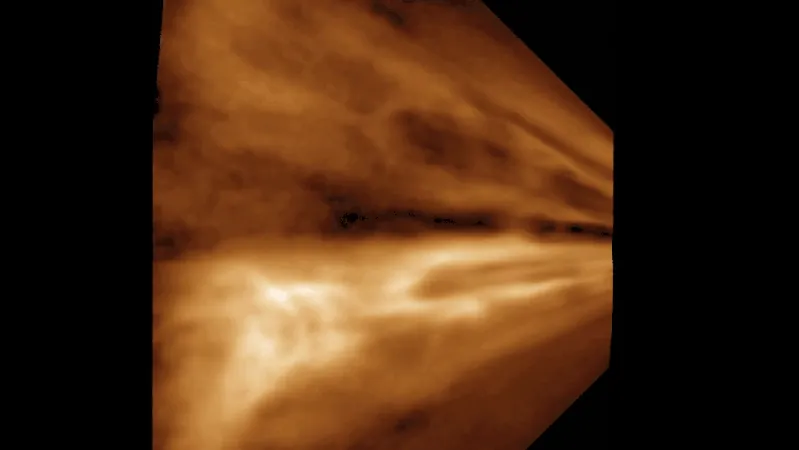
Unveiling Moon’s Hidden Water: How Solar Wind May Be Creating This Precious Resource!
2025-04-24
Author: Nur
Astounding Discovery: Solar Wind Could Be Crafting Water on the Moon!
In a breakthrough that could change our understanding of the lunar environment, a new NASA-led study suggests that the relentless solar wind might be responsible for forming water molecules on the Moon. This revelation stems from research presented on March 17 in the prestigious journal JGR Planets.
The Mystery of Moon Water Solved?
For years, scientists have torn their hair out over how water and hydroxyl — a key component of water — ended up on the Moon's surface. Various theories have circulated, including volcanic activity, outgassing from the Moon's interior, and meteorite impacts. However, this new research pivots to a dramatic hypothesis: the solar wind.
What is Solar Wind?
Solar wind consists of a constant stream of charged particles blasting from the Sun, traveling at an astounding speed of over 1 million miles per hour (1.6 km/h). While Earth's magnetic field offers us a protective shield from this cosmic weather, the Moon's weak and patchy magnetic field leaves it wide open for bombardment.
How Does It Work?
The Moon's surface is rich in oxygen bound within its rocky regolith, but lacks hydrogen. Enter solar wind, predominantly composed of protons (hydrogen atoms stripped of electrons). As these protons slam into the Moon's surface daily, they effectively 'borrow' electrons from the lunar material, facilitating the creation of the crucial hydrogen atoms needed for water.
A Daily Cycle of Water!
Excitingly, NASA notes a peculiar pattern in the water detected on the Moon: it exhibits a daily cycle. When regions heated by sunlight release water vapor, cooler areas retain it. This consistent replenishment suggests an active process, likely due to solar wind rather than sporadic micrometeorite collisions.
Testing the Waters: Simulating Lunar Conditions!
To validate their theory, researchers conducted groundbreaking experiments using lunar regolith samples collected by Apollo 17 astronauts back in 1972. They designed a miniature particle accelerator to bombard these samples with 'mock solar wind' for days, mimicking the Moon’s exposure over 80,000 years. Remarkably, they found new chemical signatures indicating water formation.
A Game Changer for Future Missions!
Lead author Li Hsia Yeo from NASA’s Goddard Space Flight Center expressed enthusiasm, stating, 'With just lunar soil and a basic ingredient from the Sun, there's a possibility of creating water.' Understanding this process is vital for future lunar missions, particularly for harnessing water ice reserves at the lunar south pole as a resource for astronauts.
Broad Implications for Space Exploration!
This research not only sheds light on water generation on the Moon but also has wider implications for other celestial bodies lacking substantial atmospheres or magnetic fields. By studying these interactions, scientists can enhance our understanding of key chemical processes crucial for sustaining life beyond Earth.
 Brasil (PT)
Brasil (PT)
 Canada (EN)
Canada (EN)
 Chile (ES)
Chile (ES)
 Česko (CS)
Česko (CS)
 대한민국 (KO)
대한민국 (KO)
 España (ES)
España (ES)
 France (FR)
France (FR)
 Hong Kong (EN)
Hong Kong (EN)
 Italia (IT)
Italia (IT)
 日本 (JA)
日本 (JA)
 Magyarország (HU)
Magyarország (HU)
 Norge (NO)
Norge (NO)
 Polska (PL)
Polska (PL)
 Schweiz (DE)
Schweiz (DE)
 Singapore (EN)
Singapore (EN)
 Sverige (SV)
Sverige (SV)
 Suomi (FI)
Suomi (FI)
 Türkiye (TR)
Türkiye (TR)
 الإمارات العربية المتحدة (AR)
الإمارات العربية المتحدة (AR)